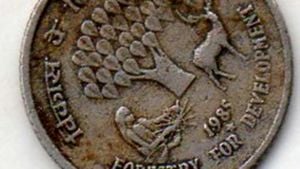Hidden beneath the famed city of Petra, known for its stunning rock-cut architecture, archaeologists have uncovered something extraordinary: a tomb untouched for around 2,000 years. This significant discovery, made by researchers from the University of St Andrews, offers new insights not only about the burial practices of the Nabataeans but also about one of history's most enigmatic places.
Petra, which has captivated visitors and archaeologists alike for centuries, has long been shrouded in mysteries. The site features impressive structures carved directly from rose-red cliffs, among which the Treasury stands out. Interestingly, this very monument gained fame as the fictional resting place of the Holy Grail in the iconic 1989 film, Indiana Jones and the Last Crusade.
The recent excavation was spurred by permission granted by Jordanian authorities, allowing the team to conduct remote sensing scans under the Treasury. These scans hinted at potential underground chambers, leading to the planning and eventual digging of the site. To the astonishment of the archaeologists, they discovered not merely artifacts but the skeletal remains of 12 individuals. Among the finds was also a ceramic vessel reminiscent of the cinematic Holy Grail.
Professor Richard Bates, from the St Andrews School of Earth and Environmental Science, emphasized the significance of this discovery, stating, “The discovery is of international significance as very few complete burials from the early Nabataeans have ever been recovered from Petra before.” This rare find provides key insights likely to illuminate the historical framework surrounding the Nabataean Kingdom.
Upon examination, the tomb's construction has been dated to between the mid-1st century BC and the early 2nd century AD. Dr. Tim Kinnaird revealed this mausoleum likely belonged to Aretas IV Philopatris, one of the prominent leaders of the Nabataean Kingdom. He elaborated, “Like many tombs in the valley, few remains have ever been found... due to their subsequent use and reuse over the last two millennia.” Hence, the earlier burials could be long lost not just to time but also to the successive waves of history.
This momentous achievement doesn’t just showcase ancient burial practices; it also draws parallels with pop culture, as Josh Gates, the host of the Discovery Channel programme detailing the excavation, noted. “When we spotted what looked like a chalice, all of us just froze,” he exclaimed. The realization of the vase’s resemblance to the Holy Grail was surreal, encapsulating the sense of art mingling with reality.
The tomb and its intriguing discoveries promise to enrich the narrative of Petra. The challenge remains, though: delineate the significance of each aspect found within. The skeletal remains and associated goods are expected to contribute valuable knowledge about the early Nabataean society, perhaps shedding light on their rituals, culture, and everyday life.
Petra, recognized as one of the New Seven Wonders of the World, has previously displayed elements of Nabataean commerce, including their impressive irrigation systems and trade routes. The latest finds under the Treasury reinforce the city's historical importance and may redefine aspects of Nabataean culture previously unknown.
This discovery not only adds another layer of intrigue to Petra but also signifies the importance of archaeological pursuits. Each foray beneath the surface has the potential to rewrite history, one tomb at a time.



